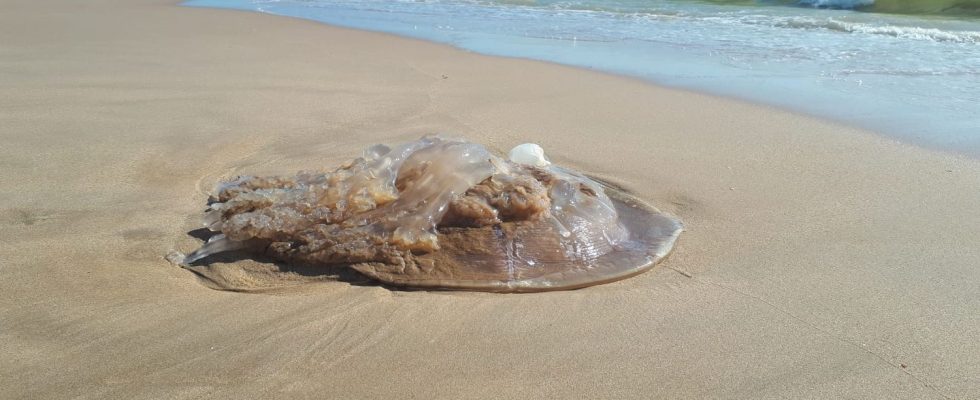Several thousand jellyfish have been discovered in recent days on beaches on the Atlantic coast and in the Mediterranean. How is this phenomenon explained?
This massive arrival of jellyfish, translucent, blue or pink, is explained by the conjunction of several factors. First the increase in temperature: the water has gained an additional 3°C or 4°C in places in recent weeks. If we add to this the abundance of zooplankton at the moment, therefore larvae of fish, crabs or sea urchins which feed jellyfish, this promotes their reproduction offshore, explains Grégory Beaugrand, bio-climatologist and research director at the Center National Scientific Research Center (CNRS). They can multiply very quickly, within three or four weeks.
If in addition there are certain wind conditions, which create surface currents and which push the jellyfish towards the coast, we can actually end up with hundreds of strandings which are suddenly concentrated on certain beaches. Recently thousands of jellyfish have been reported in Charente-Maritime, Loire-Atlantique and Finistère. On the Mediterranean side, they are also making a comeback around Perpignan and between Marseille and Nice.
This does not mean that we are specifically in a jellyfish year because it is a completely natural and transitory phenomenon. In the future, this phenomenon of jellyfish stranding on beaches may become more common due to global warming as they love warm currents. Moreover, overfishing also favors their presence, since the fish is a predator of young jellyfish and if there is not enough, the jellyfish populations increase. The phenomenon is therefore normal and transient.
In case of contact with a jellyfish
If you get stung, you must start by rinsing the burn with sea water, especially not with fresh water as this releases the venom and increases the pain. Then, to succeed in removing, without touching them, the stinging filaments stuck to the skin, the easiest way is to apply a little damp sand and gently scrape with, for example, a bank card size card.
In general, the bites are benign, but obviously in the event of abnormal swelling, do not hesitate to consult a doctor.
https://www.oceano.org/les-pages-thematiques/thematique-meduse/?utm_source=Google&utm_medium=Grant&utm_campaign=meduses&utm_term=une-meduse&gclid=Cj0KCQjw4NujBhC5ARIsAF4Iv6cyURt8Al-MBWmu0NFcawc4rh1ROtkR7ccKffDAn3Qj2F44OS yoaTMaAj-hEALw_wcB
